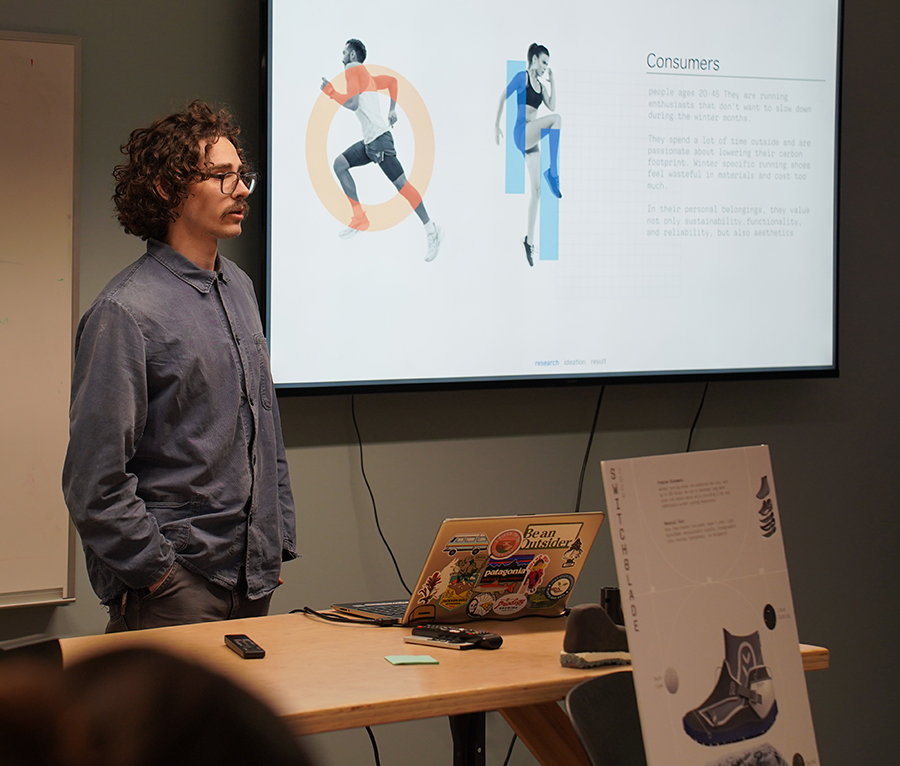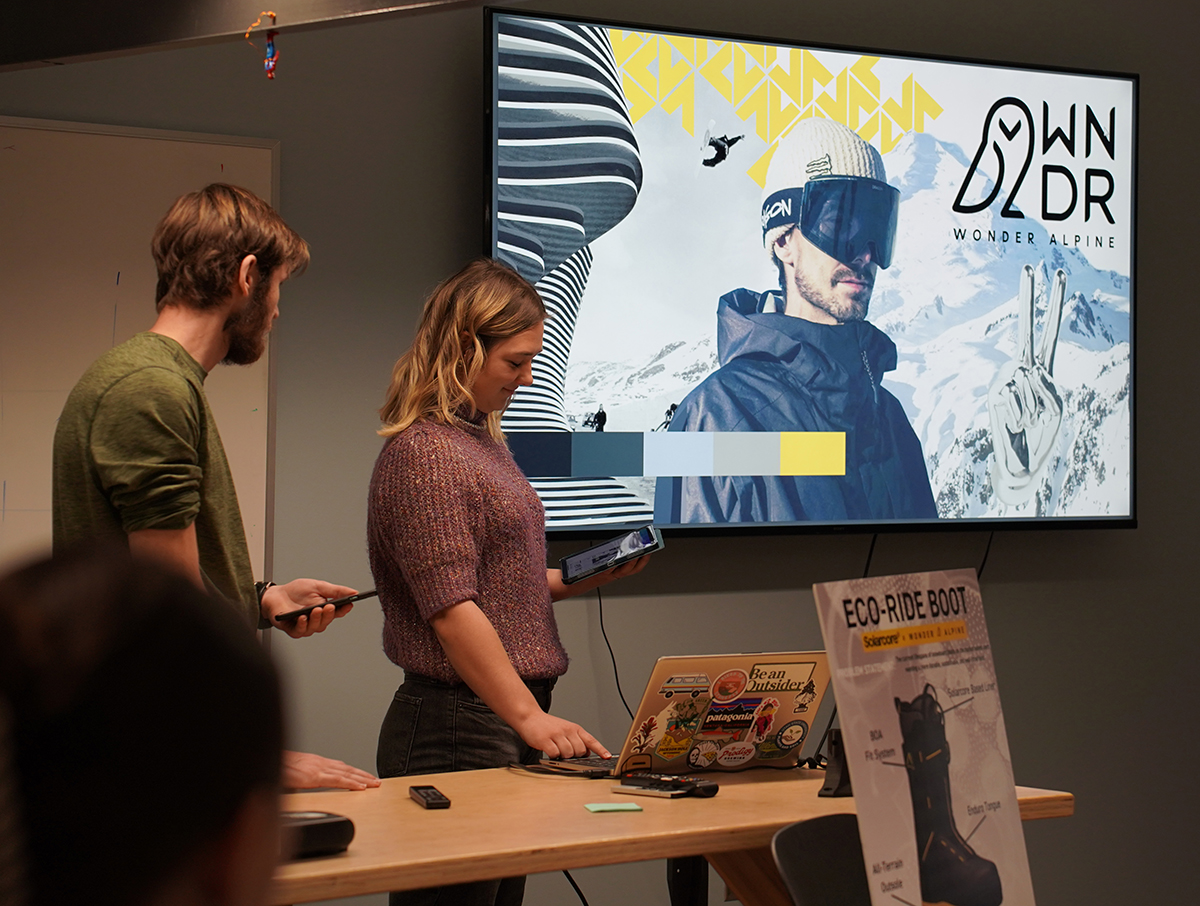 In the mountains of Logan, Utah, Dr. Julie Lamarra’s Design Thinking students are developing innovative and sustainable designs for the next generation of outdoor gear.
In the mountains of Logan, Utah, Dr. Julie Lamarra’s Design Thinking students are developing innovative and sustainable designs for the next generation of outdoor gear.
This course is a cornerstone of the Outdoor Product Design & Development (OPDD) program at Utah State University, a first-of-its-kind degree that teaches students the hands-on skills and nuanced theory they need to be innovators in the outdoor product space. This interdisciplinary program merges industrial design, engineering, digital design, fashion, sustainability, business, supply chain management, and many other areas related to the creation of consumer products.
Dr. Lamarra initially introduced the NASA-developed technology element to her course in 2021, after connecting with NASA Johnsons Space Center’s Technology Transfer office and collaborating with Under Armor for the first iteration. Students are challenged to consider an established player in the outdoor gear industry and create a new product, infusing NASA-developed technology concepts. Centering industry collaboration, human-focused design, and sustainability as core tenets of the course.
Design thinking is a methodology for approaching design problems. "I teach a human-centered method to design, asking students to consider pain points and desires in an idea-centered process. This research-heavy practice is not linear, always returning to the person and the problem to be solved. The challenge was simple: find a problem in the outdoor sports world and develop a solution infused with NASA intellectual property." Said Dr. Lamarra.
In the Spring of 2023, Dr. Lamarra collaborated with Checkerspot/WNDR Alpine and NASA Technology Transfer for the third iteration of a unique design challenge: collaborating with industry leaders in the outdoor gear space and challenging students to create innovative solutions incorporating NASA tech. "This is a big challenge for students. They are used to a hands-on approach to design: concept, build, test, and rebuild. In this class, I asked them to focus on research." Said Dr. Lamarra.
These students come to Dr. Lamarra’s Design Thinking class in their junior year, with the technical skills they will need to bring their designs to life. While the students do not build functioning prototypes, they are responsible for developing design mockups and branding for their products.
At the start of the semester, Tate Floyd, and Jason Boren (Product Engineers at WNDR Alpine and Checkerspot) met with students in their class to explain the brand mission and goals: longevity, performance, and sustainable materials. A few weeks later, Mikaela McShane, NASA T2X Communications Director, met with students virtually to introduce the NASA patent portfolio and explain the parameters of NASA Technology Transfer University. With these two resources in place, Dr. Lamarra challenged her students to choose a NASA-developed technology and create a new product offering for WNDR Alpine.
 The students reviewed the NASA patents alongside the WNDR Alpine products and developed design concepts and accompanying marketing materials. “Getting the chance to consider the NASA tech pushed me to think bigger about design. It’s easy to feel like there is a box that we should fit into when creating solutions but there is proof of incredible inventions and discoveries all the time. I think exploring the NASA tech patents and trying to find ways to work with them reminded me that there are so many possibilities.” said Anna Holland, OPDD student.
The students reviewed the NASA patents alongside the WNDR Alpine products and developed design concepts and accompanying marketing materials. “Getting the chance to consider the NASA tech pushed me to think bigger about design. It’s easy to feel like there is a box that we should fit into when creating solutions but there is proof of incredible inventions and discoveries all the time. I think exploring the NASA tech patents and trying to find ways to work with them reminded me that there are so many possibilities.” said Anna Holland, OPDD student.
At the end of the semester, students presented their ideas live to Mikaela McShane, Tate Floyd, and Jason Boren. Students focused on issues related to accessibility, sustainability, and ingenuity in their designs while keeping everything in the realm of winter sports. Their product concepts included hard goods, soft goods and apparel related to outdoor sports. Each leveraged at least one NASA-developed technology. Sutton Caplan, OPDD student, remarked “working with the NASA tech concepts forced material choice to be at the forefront of our design process and helped guide our ideation. By implementing these tech concepts into our design, I was able to explore new ways to solve problems that I wouldn’t have found otherwise.”
"I am so proud of my students' enhanced creative skills and collaborative problem-solving abilities. Working with NASA Technology Transfer and WNDR elevated their standards and pushed them to pursue innovative solutions rather than settling for easy options. This collaboration provided valuable resources and encouraged teamwork, resulting in deeper, more impactful projects. Overall, the experience fostered a culture of innovation and resilience among the students, which I'm immensely proud of." Said Dr. Julie Lamarra.
Dr. Julie Lamarra recently spoke on the NASA Technology Transfer University Innovation Series, click here to view the recording, and hear more about how she incorporates NASA-developed technology into her classroom.
For more information about NASA Technology Transfer University, visit our website or contact us at hq-t2u@mail.nasa.gov



